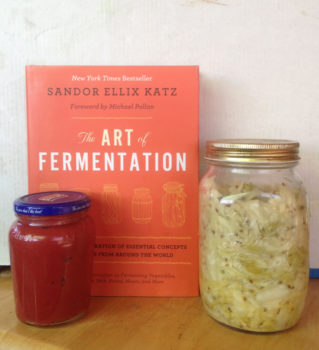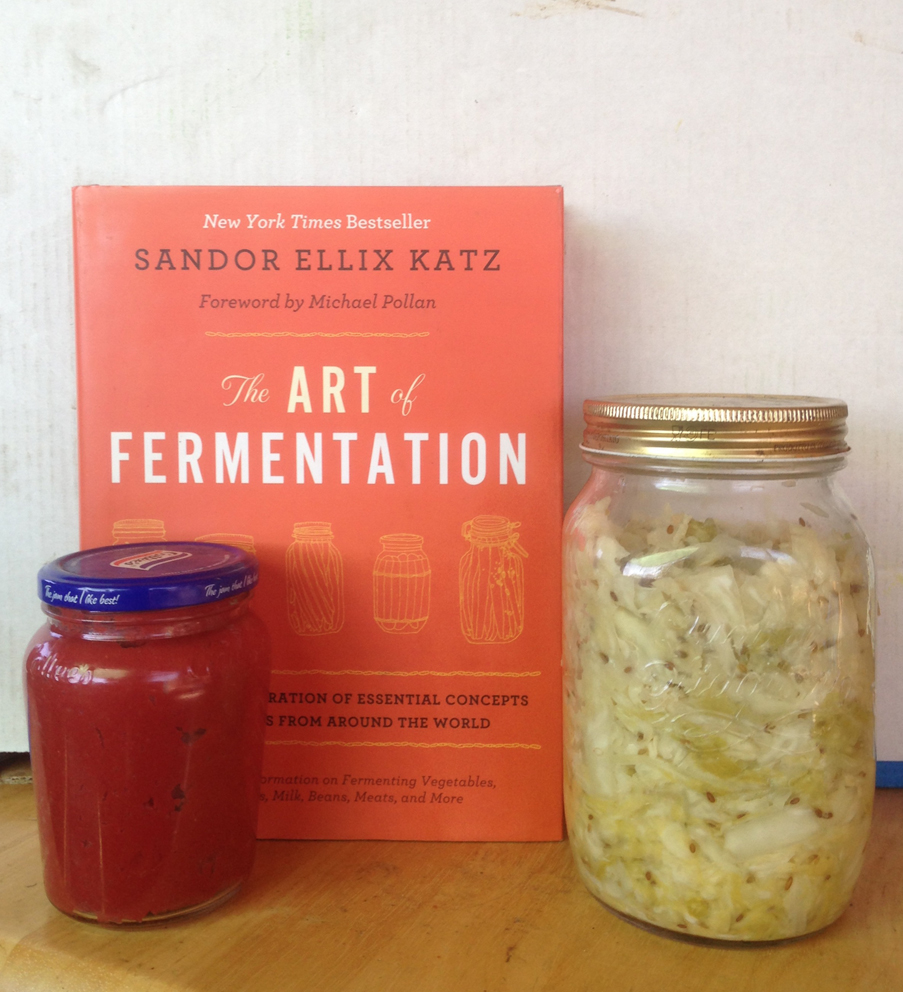 Humans have stored food for lean times probably for as long as we’ve been around. Some foods come to us in a readily storable form such as grains and pulses. Others can be air dried like meats, some fruits and vegetables. But there are many foods that can only be stored after some processing.
Humans have stored food for lean times probably for as long as we’ve been around. Some foods come to us in a readily storable form such as grains and pulses. Others can be air dried like meats, some fruits and vegetables. But there are many foods that can only be stored after some processing.
Fermentation is a method of preparing food for storing that has been with us for centuries. Think cheese or sauerkraut. Not only does fermentation make various foods storable for long periods, it often adds to their nutritional value.
Sauerkraut is an example of lacto-fermentation where the bacterium Lactobacillus acts on the food to render it stable and safe from putrefaction for very long periods. Similar to the sauerkraut of central and eastern Europe there is kimchi from Korea and the many and varied salt pickles of China, India and Japan.
The basic method is the same. Make up a brine (salt and water), put the vegies in the brine, keep air out and in as little as just a few days, you have a fermented delight. The brine protects the food from invasion by unwanted bacteria until the Lactobacillus takes hold. Some foods like cabbage already have lots of these useful bacteria on them and only need a very light brine. Other vegetables like green beans need a stronger brine or the addition of a source of lactobacillus such as whey.
Not only are many fermented foods tasty additions to a meal, they can be a great source of microorganisms beneficial to your gut. Making your own ferments allows you to create a whole world of flavours not otherwise available. Caraway is a classic flavouring for sauerkraut but you can add all manner of things – fresh coriander seeds, garlic, onions, try red cabbage and beetroot for a stunning colour, add in some shredded apple for additional sweetness, try a fermented tomato sauce.
The internet is awash with websites with lots of interesting ferments to try. One such is Pickle Me Too. There are also numerous books covering all sorts of ferments from all over the world. The classic is The Art of Fermentation by Sandor Katz. I got started fermenting after reading Sandor’s earlier book, Wild Fermentation. A clean jar, fresh cabbage, a few teaspoons of pure sea salt – that’s all you need to get started.
By Ray South
